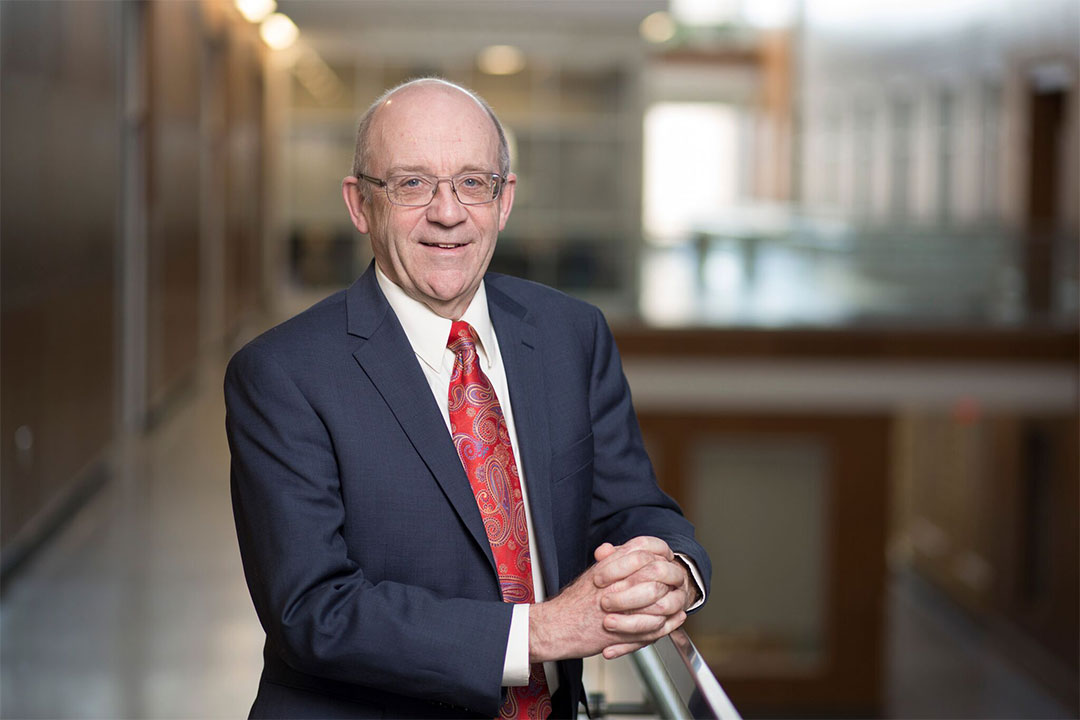
Medical school ready for accreditation visit
The College of Medicine is preparing for a much-anticipated full-site accreditation visit this fall, Oct. 29 to Nov. 1, to review the school’s undergraduate medical education (or MD) program.
By Kate BlauDr. Preston Smith, dean of medicine, said the school is feeling confident about improvements it has made and he anticipates a successful visit.
All programs in the school are fully accredited, although the under- graduate program had faced challenges that included being placed on accreditation probation twice—in 2002 and 2013. The 2013 probationary status was lifted in 2015. To address the challenges, the college broke away from its third integrated plan in 2013 to follow an intervening plan, The Way Forward, to guide the changes needed to address accreditation issues.
“We’ve followed The Way Forward and been very deliberate about that,” Smith said. “Being a fully accredited medical school, a highly successful medical school, is what the university wants and needs. And while we’ve been on a journey to have a fully accredited, excellent undergraduate medical education program, we are focused on being an excellent medical school.”
The college has worked across what Smith calls a “continuum,” starting with “beefing up” admissions. Applicants to the MD program now must take the Medical College Admission Test (MCAT), an exam used by almost all U.S. and many Canadian medical schools. A highly successful Indigenous Admissions Program and a new Diversity and Social Accountability Program support accessibility and reflect Saskatchewan’s population.
Extensive work has been done to improve the undergraduate medical curriculum, including a four-year transition to enhance clinical learning, as well as expanded learning across patient safety, clinical care research, and interprofessional and team-based settings. Improvements were needed to engage more medical doctors in teaching and research in the college.
“When I arrived in 2014, it was clear that we had less than half of the MD time, medical doctor time, here devoted to the medical school, compared to most medical schools our size,” Smith said. “So we’ve gone to a one faculty model to more effectively bring together our full faculty complement across biomedical and community health scientists, and medical faculty.”
Key to engaging more medical faculty in teaching in the college was detaching faculty appointment from payment methods. The majority of U of S-employed medical faculty members who had the choice in 2016 to move to a new form of engagement with the college through an Academic Clinical Funding Plan or other contract arrangement, chose to do so, and all new medical faculty joining the college since then also follow this approach. Results in just one year have been positive.
“We’ve actually gone from about 35 full-time equivalent of physician time engaged in teaching in the College of Medicine, to about 80 full-time equivalent, for the current academic year,” Smith said.
The college has also been building capacity in medical research, investing in internal research awards to support faculty and graduate student success. In 2017, the college established two significant new chairs: the Saskatchewan Chair in Multiple Sclerosis Clinical Research filled in April by Dr. Michael Levin, and the Cameco Chair in Indigenous Health filled by Dr. Alexandra King, who starts Oct. 16.
Previous accreditation feedback also indicated the college needed to bolster its administrative infra- structure. College leadership now includes three vice-deans of medical education, research and faculty engagement, while assistant dean positions have been added in biomedical sciences and undergraduate medical education. New department heads have also joined the team, while administrative staff have been added in key areas, including student services and advancement.
“One of the successes in the last year that I’m very proud of as well is our new five-year strategic plan,” Smith said. “We really came together as a college, and involved key stakeholders, to create this plan. Now we’re shifting to follow it, with the bulk of the work of The Way Forward completed.”
With the accreditation visit just around the corner, preparing for it is very much front and centre. Over the past year, students, faculty, staff and administrative leaders have worked extensively to submit more than 1,000 pages of documentation to the accreditation visitors in July. Since then, the focus has shifted to preparing for the visit, which will involve about 200 students, faculty and staff from the college and some external stakeholders.
The accreditation work was bolstered recently when the Government of Saskatchewan restored $20 million in funding to the college for the 2017-18 fiscal year.
“The recent support of our government was needed and is greatly appreciated,” Smith said.
Does all this mean the college is ready for accreditation? Smith thinks it does.
“We have changed dramatically our approach to supporting students,” he said. “We have a new curriculum that’s fabulous. We have the structure now to continuously improve in these and other areas, and we are committed to doing this for our students long after the accreditors are gone. What UGME accreditation really wants to know: Are the people of Saskatchewan getting really well-trained doctors and are the students supported in that journey? And I feel that the work that we’ve done, it adds up to a resounding yes. Still, if you’re not looking at the bigger picture, you’ll always be in trouble on accreditation. So doing the work we’ve been doing to be an excellent school—the side effect is success in accreditation.”
Kate Blau is a communications specialist in the College of Medicine.

